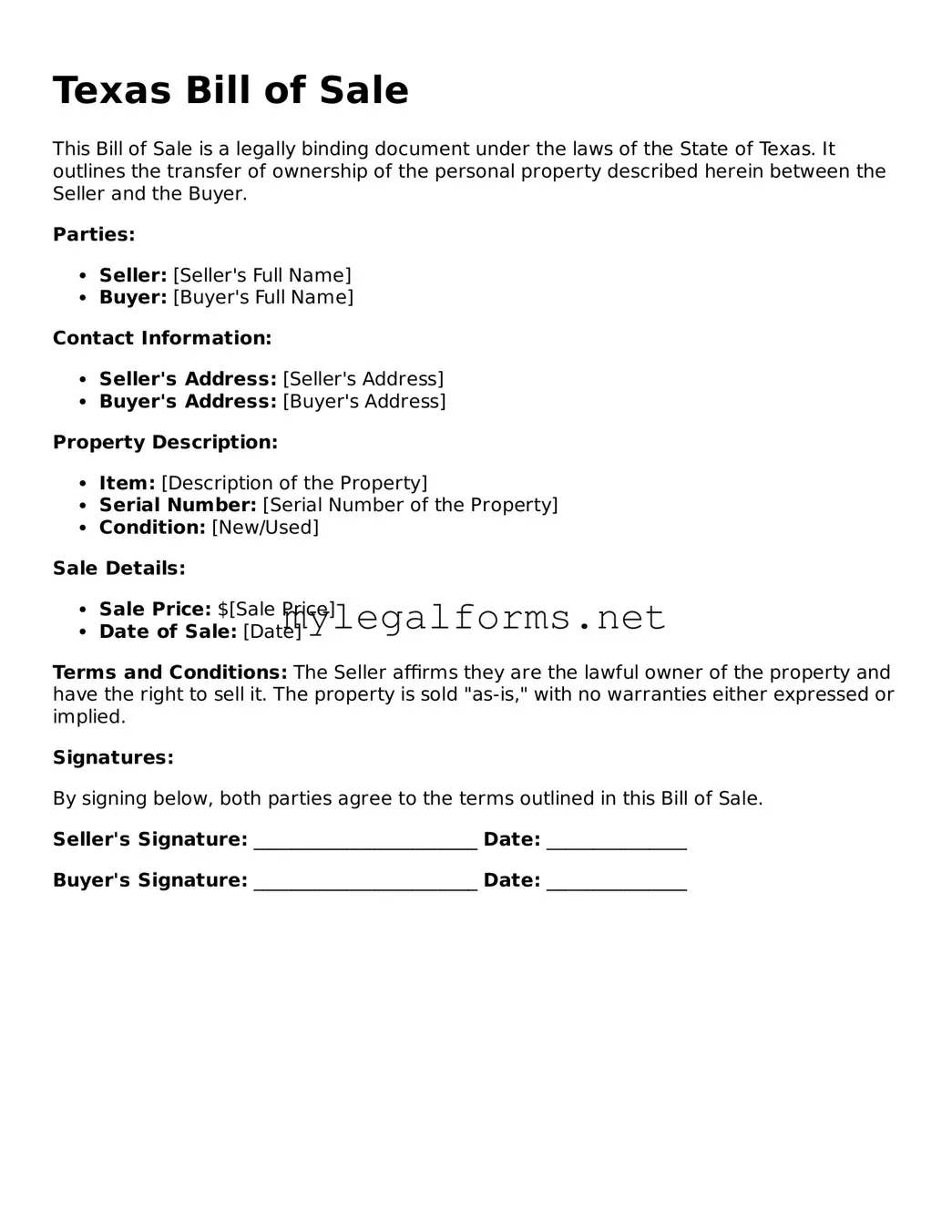Filling out a Texas Bill of Sale form can seem straightforward, but many people make common mistakes that can lead to complications down the road. One of the most frequent errors is failing to include all necessary information. The form requires specific details such as the names and addresses of both the buyer and seller, a description of the item being sold, and the sale price. Omitting even one piece of this information can render the document incomplete and potentially invalid.
Another mistake often made is not accurately describing the item. Whether it's a vehicle, a piece of furniture, or equipment, the description should be clear and precise. This includes details like the make, model, year, and identification numbers for vehicles. A vague description can lead to disputes later on, as it may be unclear what exactly was sold.
Many individuals also forget to sign the Bill of Sale. While it may seem trivial, a signature is a crucial component that signifies agreement between the buyer and seller. Without it, the document lacks legal weight. Additionally, both parties should retain a copy of the signed Bill of Sale for their records. This step is often overlooked, leading to potential issues if questions arise in the future.
Another common oversight is not including the date of the transaction. The date is essential for establishing when the sale occurred, which can be important for tax purposes and for tracking ownership. Without a date, it may be difficult to prove when the transfer of ownership took place, creating confusion later on.
Lastly, people sometimes fail to check for local requirements. While the Texas Bill of Sale form is standardized, certain counties or municipalities may have additional regulations or requirements. Ignoring these local laws can lead to complications, especially if the sale involves a vehicle or property. Always double-check to ensure compliance with local regulations to avoid future headaches.
